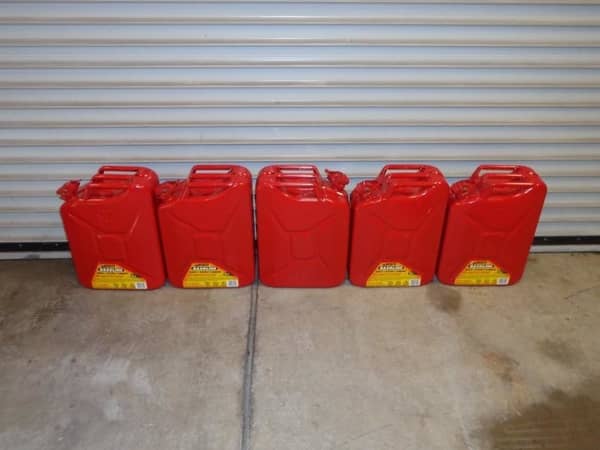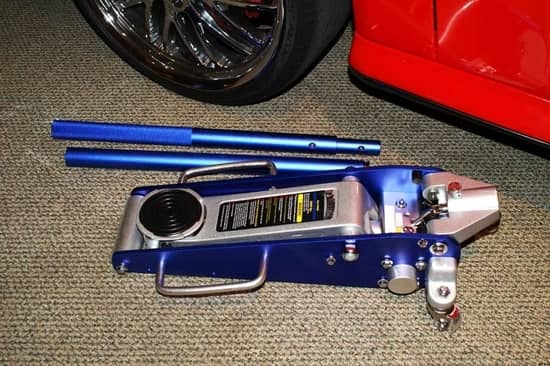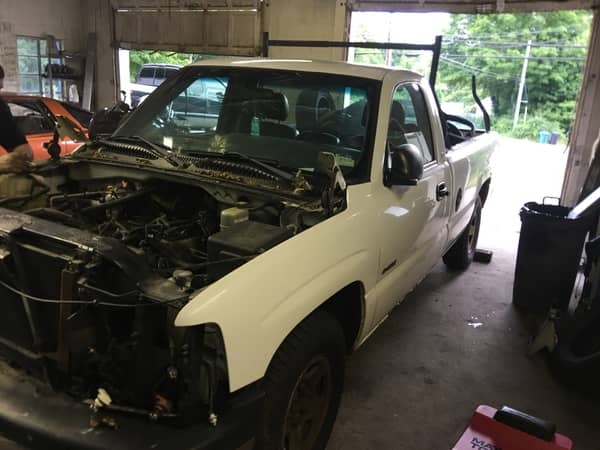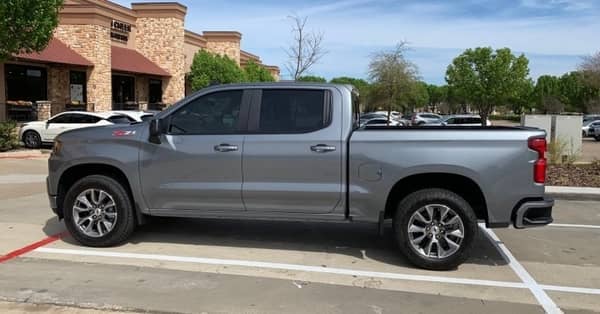No matter how proud you are of your pickup truck, you know there are improvements that could be made. High on the list of improvements is that you wish it were a little bit lighter. If it were, your truck would move faster, stop quicker, handle better, carry a bigger load, and use less fuel. The advantages are clear, but how you go about pulling it off is not so straight forward.
How can you make your pickup truck lighter? Reduce your pickup truck’s weight by carrying only the necessities, driving with less gas, replacing heavy steel parts with lighter aluminum versions, or removing nonessential components entirely. Pickup truck manufacturers are using aluminum and composite steel alloys to make lighter frames.
How you make your pickup truck lighter, will depend on what you want to gain from a reduced weight, how much time and money you can invest in the improvement, and how much you’re willing (and able to) to drastically alter your pickup truck. No matter what your goals are, the lighter you can make your pickup truck, the better. Let’s take a look at how you can do it.
What You Can Do to Make Your Pickup Truck Lighter
When trying to make your pickup lighter, there are actually a lot of things you can do. First, though, you need to decide why you want your truck to be lighter, and what sacrifices you are willing to make to achieve your goal.
If you simply want better fuel efficiency, for example, you may not be willing to remove your AC system to eliminate its weight. If you are trying to shave fractions of a second off your race time, on the other hand, you may be willing to spend hours scraping a few pounds of sound insulation from the floors and firewalls. Knowing your goals will help clarify your limits.
- Some things you can do to reduce your pickup truck’s weight are easy and will not alter your truck’s appearance in any way.
- Some things you can do involve rather extensive labor and will greatly alter your truck’s appearance as well as its performance.
- In the extreme, there’s almost no limit to how much you could strip away nonessential truck components to reduce weight.
We’ll take a look at some things you can do to reduce your pickup truck’s weight, starting with the least invasive and progressing to the most extreme.
Put Less Fuel in Your Gas Tank

The gas tank of most pickup trucks can hold 26 gallons of gasoline. One gallon of gas weighs a little more than 6 pounds (2.72 kilograms). Riding with a full tank of gas, then, adds about 156 pounds (71 kilograms) of weight.
You rarely need to drive a full tank’s distance in one sitting. If racing, you’ll want to put in only as much fuel as you’ll need. When driving around town, only filling the tank halfway is an easy way to reduce pounds to increase fuel efficiency.
Why stop there? Do you really need a full tank of windshield washer fluid?
Don’t Carry Unnecessary Weight
Next, you need to think about what you’re carrying around. On a macro scale, it’s obvious that you don’t want to be driving around with a bed full of gravel. On a micro scale, there’s probably a bunch of random things in your truck that you can get rid of.
Most people have junk in their vehicles that they don’t even remember are in there. There are several things you can clean out. These include:
- fast food wrappers,
- water bottles,
- gym bag,
- spare headlight bulbs,
- city maps,
Clearing out whatever random trash you have in your truck is a great place to start. When Charles Lindberg made the first flight across the Atlantic Ocean, he cut away parts of his map he knew he wouldn’t need. You could learn something from his attention to weight cutting detail.

Other things you could consider removing include:
- spare tire,
- jack,
- floor mats,
Pretty much anything you can do without, can be removed.
You also need to extend this to people. It’s nice to be able to give a friend a ride, but is it worth the weight? Each passenger adds 1 or 2 hundred pounds (depending on your friends). No matter how good a navigator (or how good their taste in choosing radio stations) no passenger is necessary – except the driver.
Speaking of the driver, you’ll want to apply this reduction of weight to yourself as well. 30 percent of the world’s population is obese or overweight. The percentage is much higher (as high as 60 to 70 percent) in developed countries. Statistically, if you have the time and income to worry about your pickup truck’s weight, you can reduce it by shedding some weight yourself.
Remove Unneeded Pieces of the Interior
Once you’ve removed everything you don’t need from your truck, you may start wondering if you couldn’t just start getting rid of pieces of truck. This is the point in which you begin altering your truck’s appearance to reduce its weight. Take a gut check to see if it’s worth it to achieve your goals. If it is, start gutting the truck.
If you’ve committed to not carrying any passengers, you really don’t need passenger seats. If your pickup truck has an extended cab, the rear seats could easily weigh about 55 pounds (25 kilograms). If the seats are electronically adjustable, they might weigh as much as 77 pounds (35 kilograms) each. A sports driver’s seat, on the other hand, is only 26 pounds (12 kilograms.)
If you want to start getting extreme, you could also rip out the:
- door cards,
- dashboard,
- carpet,
- underlay,
- radio, and
- speakers.
Install Lighter Wheels

If you’re putting this much thought into your pickup truck’s weight, you’ll definitely want to take a look at your wheels. A lighter set of wheels may only cut about 5 pounds (11 kilograms) per tire, but the reduced rotational mass of the rims will have greater benefits than just reducing the weight.
It is easier for the engine to turn smaller wheels, so you’ll see an improvement in acceleration, as well as reduced wear on the suspension.
Replace the Body Parts with Lighter Versions
Perhaps you’ve gotten rid of everything from your pickup truck’s interior that isn’t essential, and you still want to reduce the weight further. You may find yourself thinking things like, “I know I should have doors, but do they have to be so heavy?” The good news is that they don’t have to be so heavy. The bad news is that lighter versions will cost you.
If your truck was built before 2015, it’s probably made of heavy steel parts. In recent years, manufacturers have made efforts to reduce weight and improve fuel efficiency with aluminum and steel alloys, but older trucks are still heavy. If you’re serious about reducing your pickup truck’s weight, you can replace heavy steel parts with new versions made of lighter materials.
Great strides have been made in tempering aluminum to be strong enough to be used as lighter replacement parts without sacrificing strength. Glass fiber-reinforced plastic (GRP) is also an option for body panel parts. You could opt for carbon fiber body panels, though they tend to be much more expensive.
You can reduce your pickup truck’s weight by installing lighter versions of your:
- hood,
- front wings,
- trunk lid,
- doors, and
- roof.
Replace Glass Windows with Polycarbonate Sheets
One part you might fail to consider replacing are your pickup truck’s windows. Glass is the traditional material, but there are lighter materials that you can see through that will keep the wind and debris out of your face.
A clear polycarbonate plastic can be used to replace the glass in your pickup truck. It will reduce the weight by 2 to 4 pounds (1 to 2 kilograms) per window.
Replace (or Remove) Heavy Electrical Components
When you really take a hard look at your pickup truck, you’ll realize that a lot of it isn’t actually needed for propelling you forward. A lot of components are actually there to keep you comfortable while driving. These components really add up to a lot of weight. If you’re really serious about reducing weight, you can make some pretty extreme cuts or replacements.
A typical truck battery, for instance, weighs 22 to 33 pounds (10 to 15 kilograms). A racing battery, on the other hand, might weigh half that. Aside from replacing critical components with lighter (and more expensive) versions, you can also simply remove some components altogether.
Consider removing:
- the air conditioning compressor,
- the heater matrix,
- fans,
- piping,
- stereo,
- speakers and wiring.
Extreme Measures
If you’ve torn out all the systems that aren’t responsible for making your pickup truck move, you’re clearly obsessed with reducing your truck’s weight. If you have the skill (and patience) to meticulously take your pickup truck apart, you can surely find a few more redundant screws or brackets you can do without.
Try looking at the:
- flywheel,
- sound deadening material,
- dash supports,
- roof support webbing,
- firewalls, and
- door beams.
Some of these cuts could have serious repercussions. You may decide your truck’s side impact beams are not worth the weight, but you will certainly pay the price if you are T-boned by another driver. At some point the reductions in weight will not be worth the price, whether that price is:
- cost
- time
- safety.

What Manufacturers Are Doing to Make Lighter Pickup Trucks
Over the years, trucks have grown in size and added a lot of features (that add weight). As gas prices have risen, demand for more fuel-efficient vehicles has risen. This market trend, combined with legislation requiring as much, has prompted pickup truck manufacturers to produce lighter trucks. Doing so, however, has required a lot of innovation in building materials.
Traditionally pickup trucks have been made largely out of steel. Steel is strong, but heavy. As manufacturers have increasingly felt the pinch of creating lighter, more fuel-efficient trucks, they have been scrambling to find lighter alternatives. The most significant advancements have come in the form of treated aluminum and steel alloys.
One of the benefits of using aluminum is that it can be recycled without losing structural strength. Every time steel is melted down and reformed, it has less strength, and therefore must be used for a part that requires less strength. When aluminum is melted and reformed, though, it has the same strength and can be used to manufacture any part.
The recyclability of aluminum means that any slag or cutouts produced during the manufacturing process is not lost but can be used to make more parts. This reduces the cost of production and, ultimately, the price of the pickup truck.
Ford
Aluminum is much lighter than steel, but typically not as strong. It is the metal used for soda cans, for example. By heat treating aluminum, however, you can create a material strong enough for use as pickup truck body panels.
Starting with the 2015 F-150, Ford took an extreme step in using aluminum to replace steel for a majority of its truck body components. The result is a truck 700 pounds (317 kilograms) lighter than the previous F-150 model.

Ford accomplished this by using steel for most of the structural frame on the underside of the truck and the protective roll cage, but the much lighter aluminum for the body panels. It is a significant step towards lighter pickup trucks because the F-150 was the highest selling truck. 750,000 were sold per year. It signaled a major shift in lighter, more fuel efficient pickup trucks.
Extensive testing with actual customers was used to figure out what type of aluminum to use where, and how thick it needs to be to stand up to expected stress. In this way, Ford is able to keep the pickup truck as thin (and light) as possible on the whole, but have the strength and rigidity required at the places that it needs.
GM
GM responded to Ford’s aluminum F-150 by investing in steel alloy technology. GM engineers used computer aided simulations to redesign different components of their vehicles with different materials before production. They scrutinized every aspect of production, punching out lighting holes in some parts and scalloping weld edges on others.
GM has also developed a way to weld aluminum and steel together, a feat which previously hasn’t been able to produce enough weld strength needed for auto parts. This new process allows them to weld the metals together without the added weight of transition pieces (joined by other means) so they can put steel where needed and aluminum where weight can be reduced.

As a result, they were able to shave 300 pounds (661 kilograms) off the Chevrolet Malibu, 250 pounds (551 kilograms) off the Chevy Volt, and 700 pounds (317 kilograms) off the Buick LaCrosse.
The Importance of Keeping It All Balanced
We’ve already considered the payoff between reducing weight and sacrificing comfort and safety. There is, however, another important balance to keep in mind.
Removing too much weight from any one section of your pickup truck can throw off the truck’s overall balance. Upon manufacture, your pickup truck was strategically designed to distribute its weight evenly throughout its four tires. Barring a full balance, the suspension was designed to compensate for weight distribution, to make it run smoothly.
Removing too much weight from any one section of your pickup truck, can disrupt this balance. This can have significant consequences in the truck’s handling. The truck can be less responsive, harder to turn, and even more likely to roll. When making your pickup truck lighter, try to keep the weight relatively well balanced through the truck’s frame.
The Benefits of a Lighter Pickup Truck
The benefits of making your pickup truck lighter are many and depend on your goals.
- Reducing your truck’s weight by 10 percent can result in a 5 to 7 percent decrease in fuel use, according to some calculations.
- A 10 percent reduction in weight also requires 10 percent less force to start and stop, reducing wear on parts and brakes.
- Your truck’s payload is measured by subtracting its weight from its Gross Vehicle Weight Rating (GVWR), so a lighter truck means bigger payload.
- If you’re a drag racer, removing 100 pounds from your truck could shave 1/10th of a second off your quarter mile.
Whatever your goals are, the amount of benefit you achieve is directly related to the amount of weight you are able to cut, which is related to how much you are willing to sacrifice in order to achieve your goal.
If you’re thinking of different ways to accessorize your truck or make it more functional, consider checking out my recommended accessories page. I spent a good amount of time picking out mods that can be useful for most pickup trucks.

